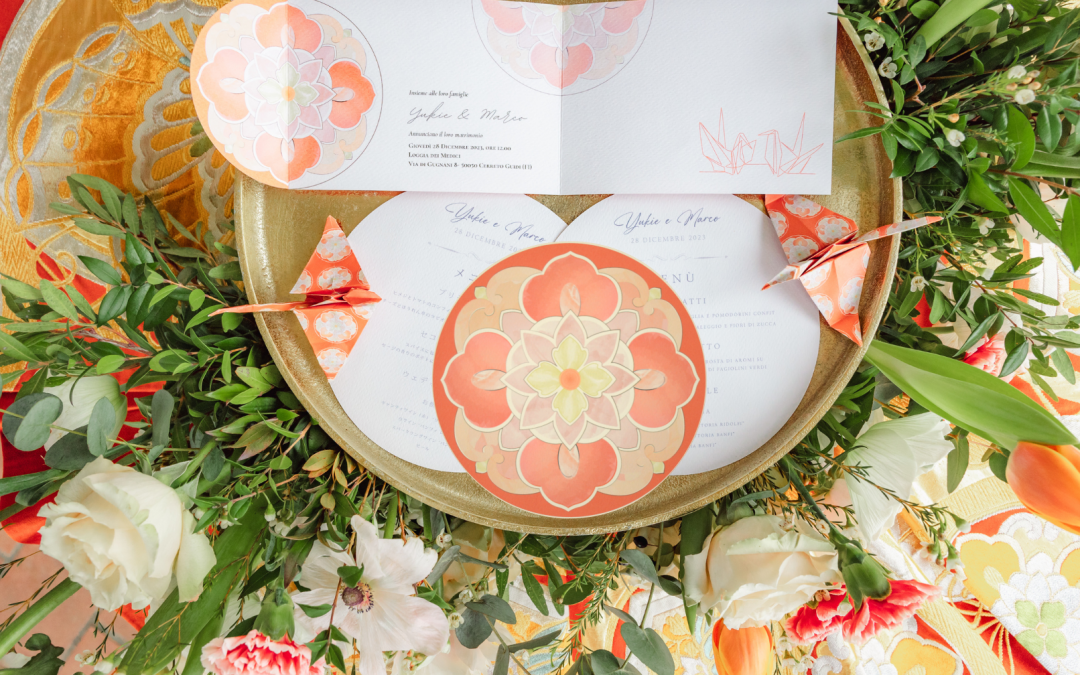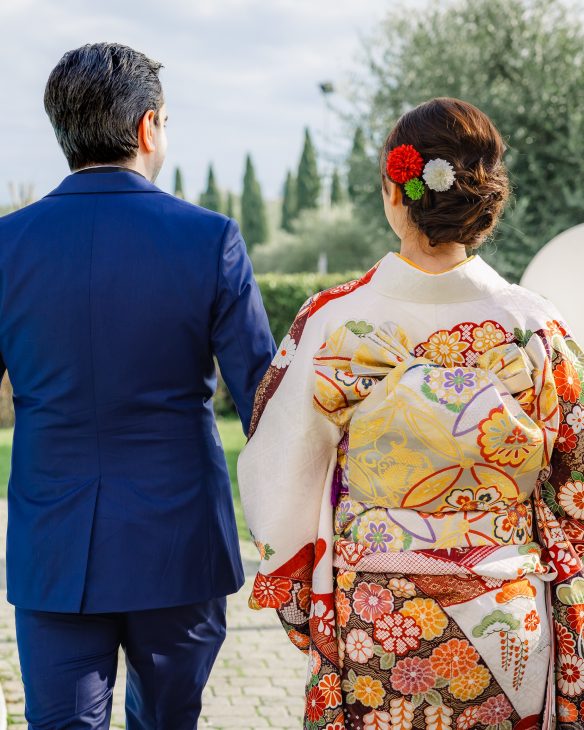Merging two different cultures together is not always so easy. What these two newlyweds wanted was to have a winter wedding in beautiful Tuscany, immersed in the atmosphere of Christmas but with elements that echoed the culture and traditions of Japan. To do this, we started from a decorative element of traditional Japanese dress (the kimono, in fact) to bring to life all the typographical equipment without neglecting the floral decorations, beverages and gifts for the wedding reception guests.
Crane-shaped origami
In Japanese tradition, cranes are considered a symbol of good luck and immortality. Furthermore, due to its monogamous habits, the crane represents fidelity, so it is a perfect symbol to use in a wedding decoration. Starting from the embroidery of the obi (Japanese belt used for women’s kimono), the design was extrapolated, reproduced first with watercolors and then digitally on a PC. The watercolor technique is an ancient Japanese painting technique that was used precisely to create nuances to the wedding typography and avoid a flat, uniform color that would have contrasted with the mood of the event. Once the design was created (also used for invitations and menus) a repeating pattern was created for the paper used to create the origami. The origami in the shape of a crane was used as a place marker and to decorate the favors and confetti corner.
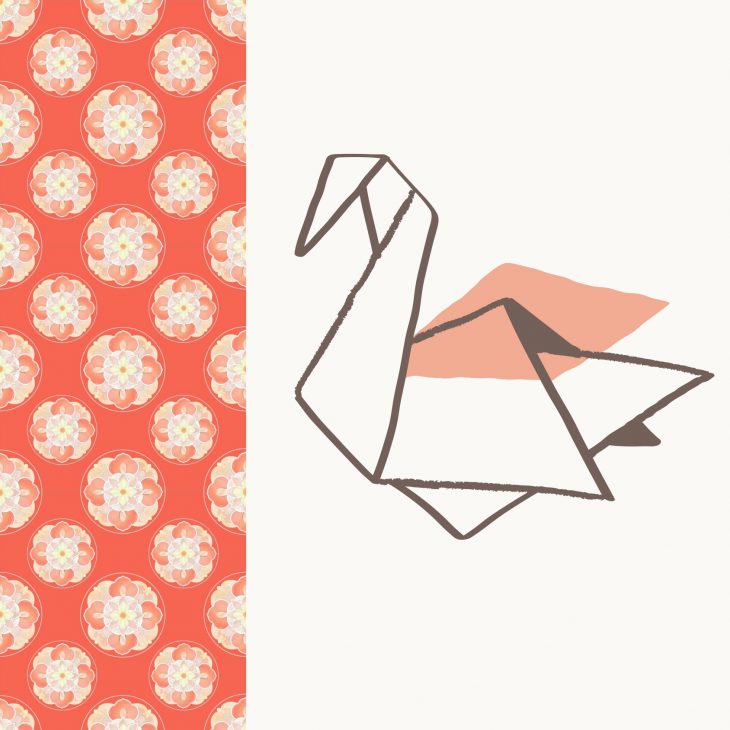
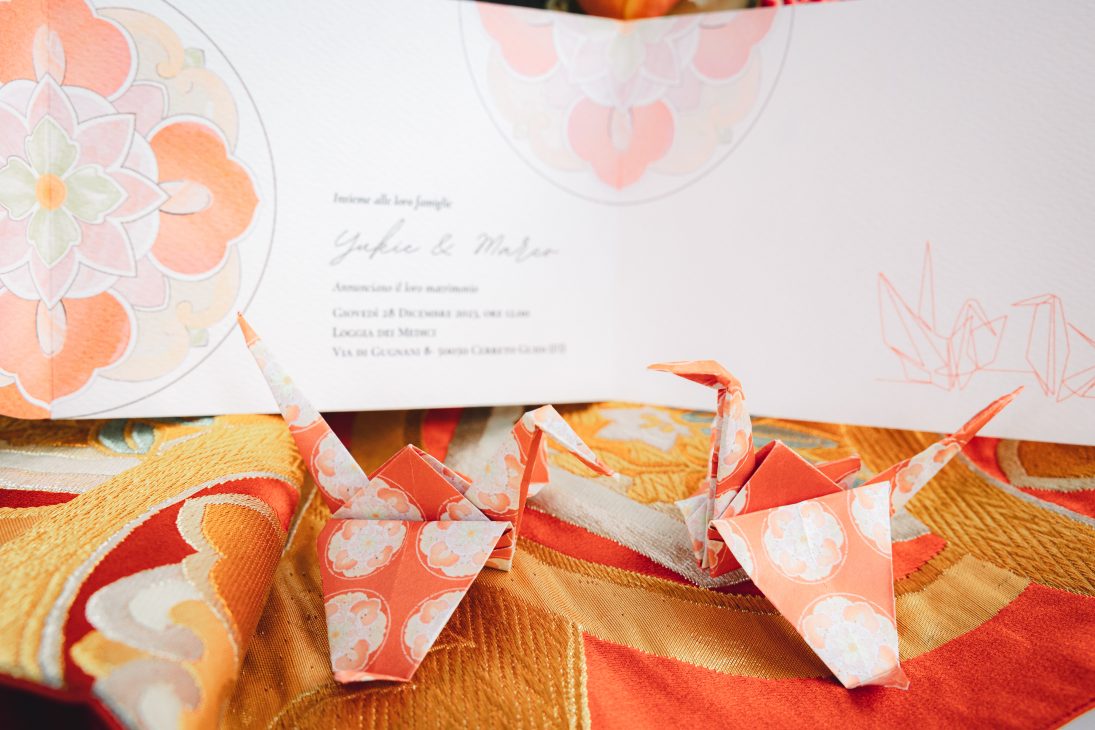
Wedding Invitations
The wedding invitations and save-the-dates also use the same graphics and auspicious concept of cranes as a symbol of eternal love. The particularity lies in the closing of the wedding invitation, as the decoration is divided into a semicircle that can only be seen in full when the invitation is opened. Bright colours (in this case we used peach and orange) are also typical of Asian weddings. In particular, for important occasions such as weddings and birthdays, white and red are worn as symbols of celebration, joy and happiness. In fact, the colours of the bride’s kimono echoed these very colours.
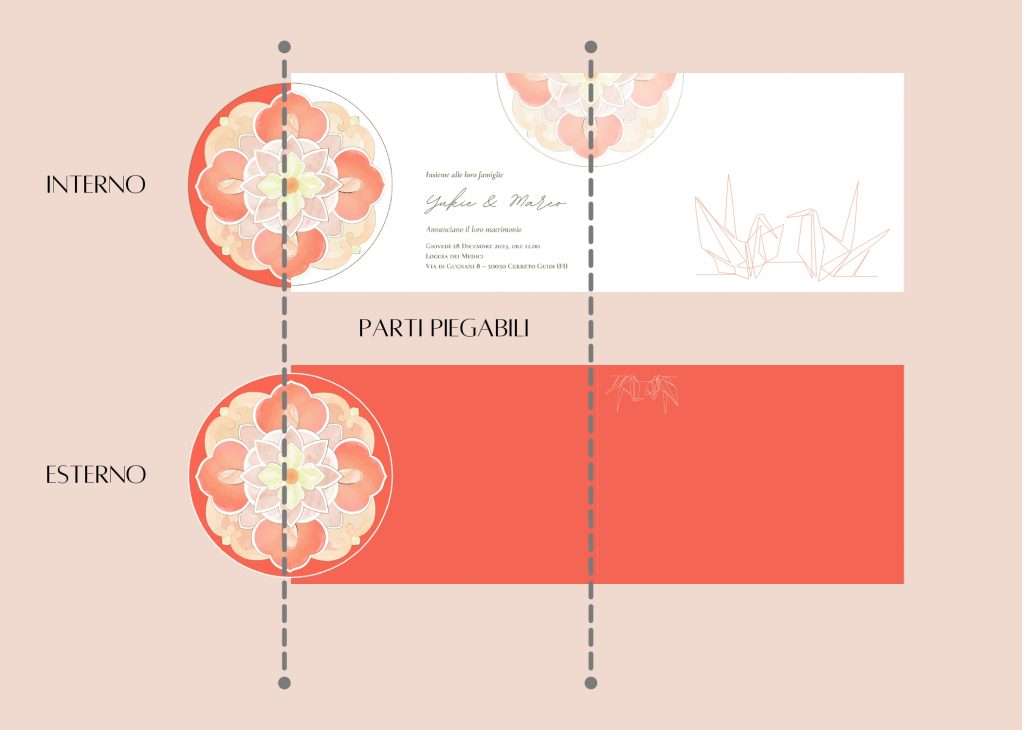
Japanese-style floral decorations
For the wedding winter flower decorations, the ikebana technique was used. Ikebana literally means “living flowers” and “bringing the flower to life” is a Japanese term referring to the art of arranging cut flowers, also known by the more obsolete name of kadō, which refers to the principles of Zen, it is “way of flowers”. Although it cannot be seen from the photo, the flowers of the smaller cups have not been tucked into the sponge, as one might think, but the arrangement is maintained with the help of a support and balancing acts. Precisely following the philosophy behind this technique, namely the desire to find balance through nature.
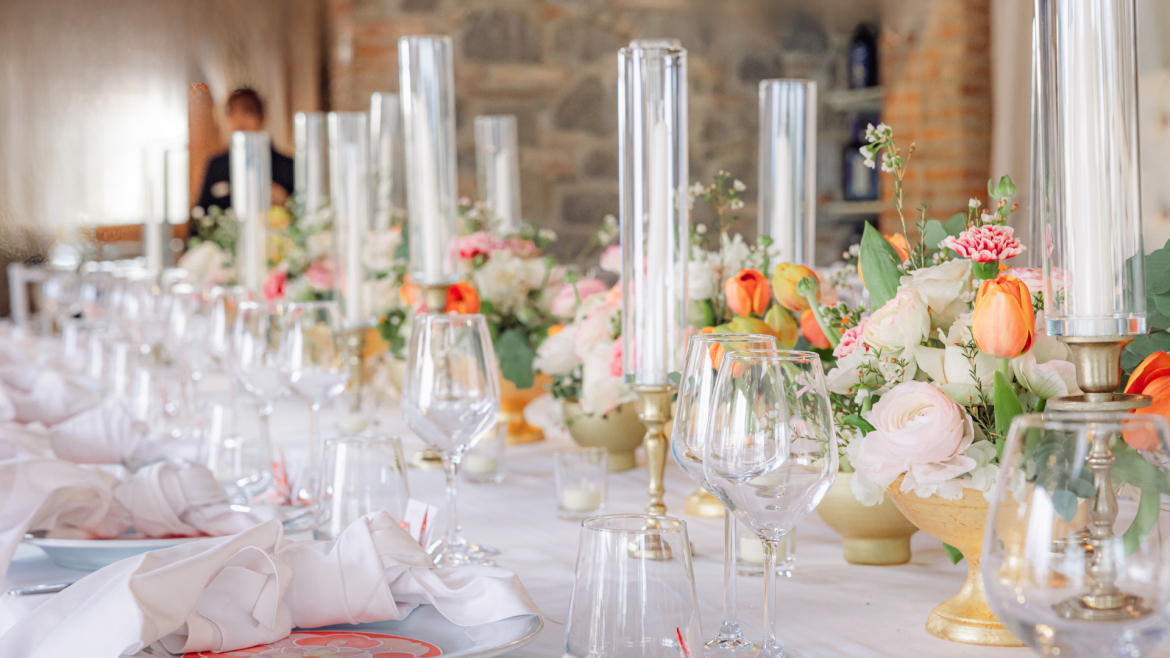
Japanese Wedding Cake
Even the wedding cake was initially supposed to feature the same specially created decorations with a silicone stencil and a light peach shade. However, the bride and groom preferred something more minimal chic, still arranged on 3 levels and filled with mango cream. A few floral touches and that was it! A scenic, elegant and exotic-tasting wedding cake!
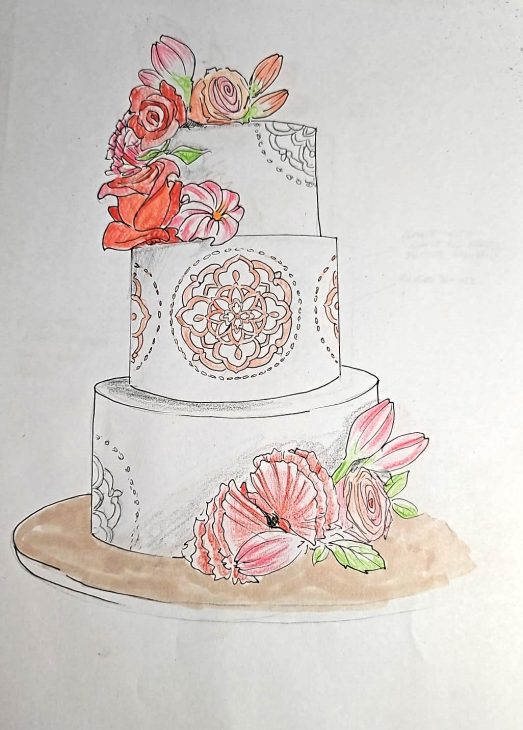
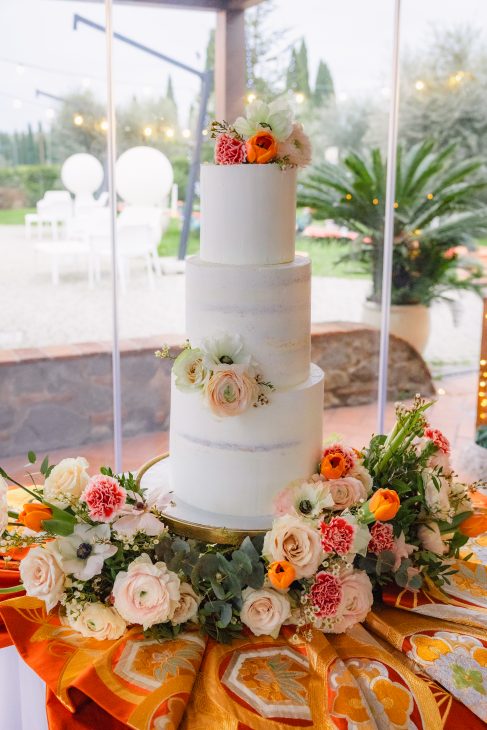
ph Fotomatrimoni.it
